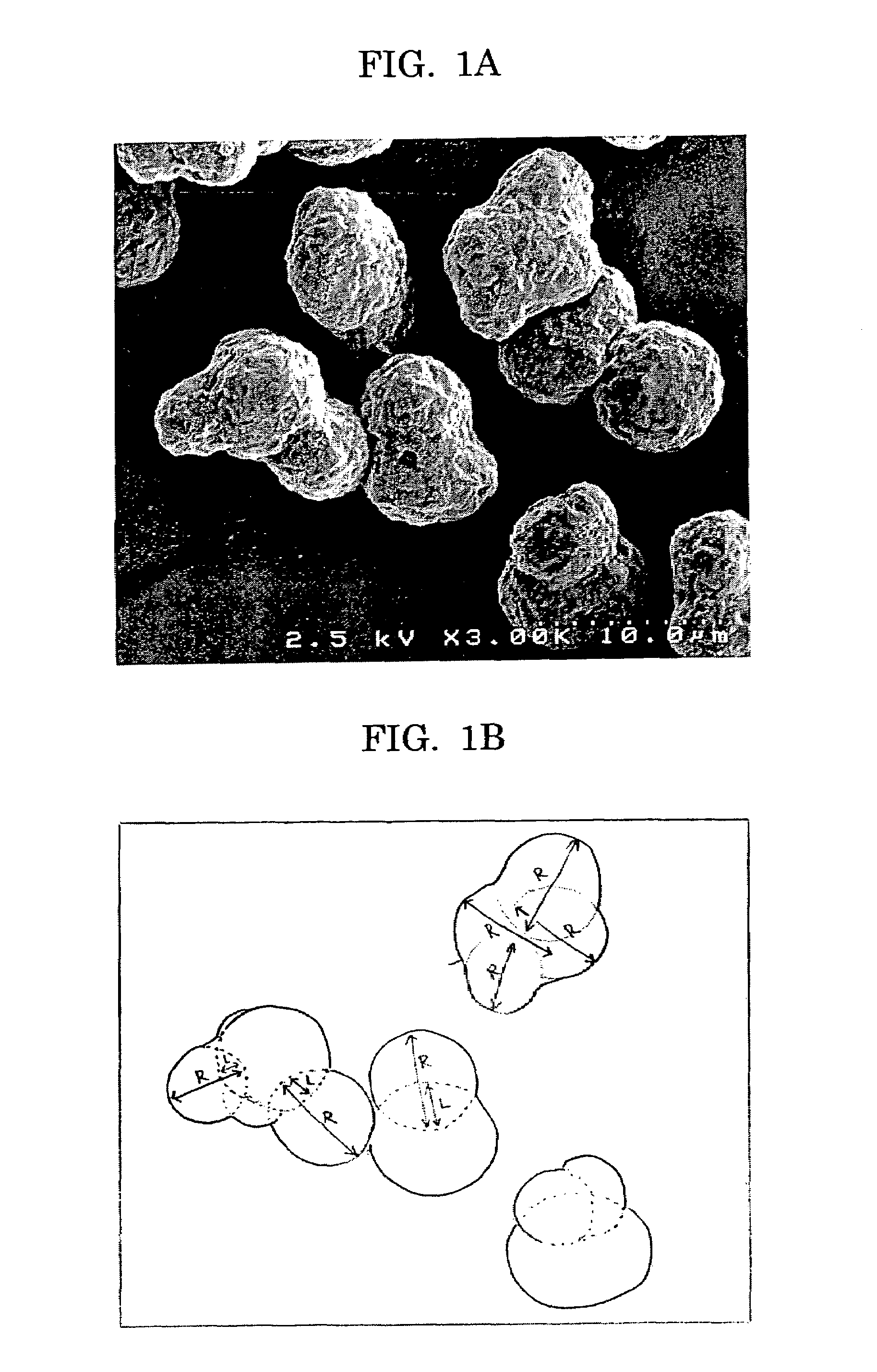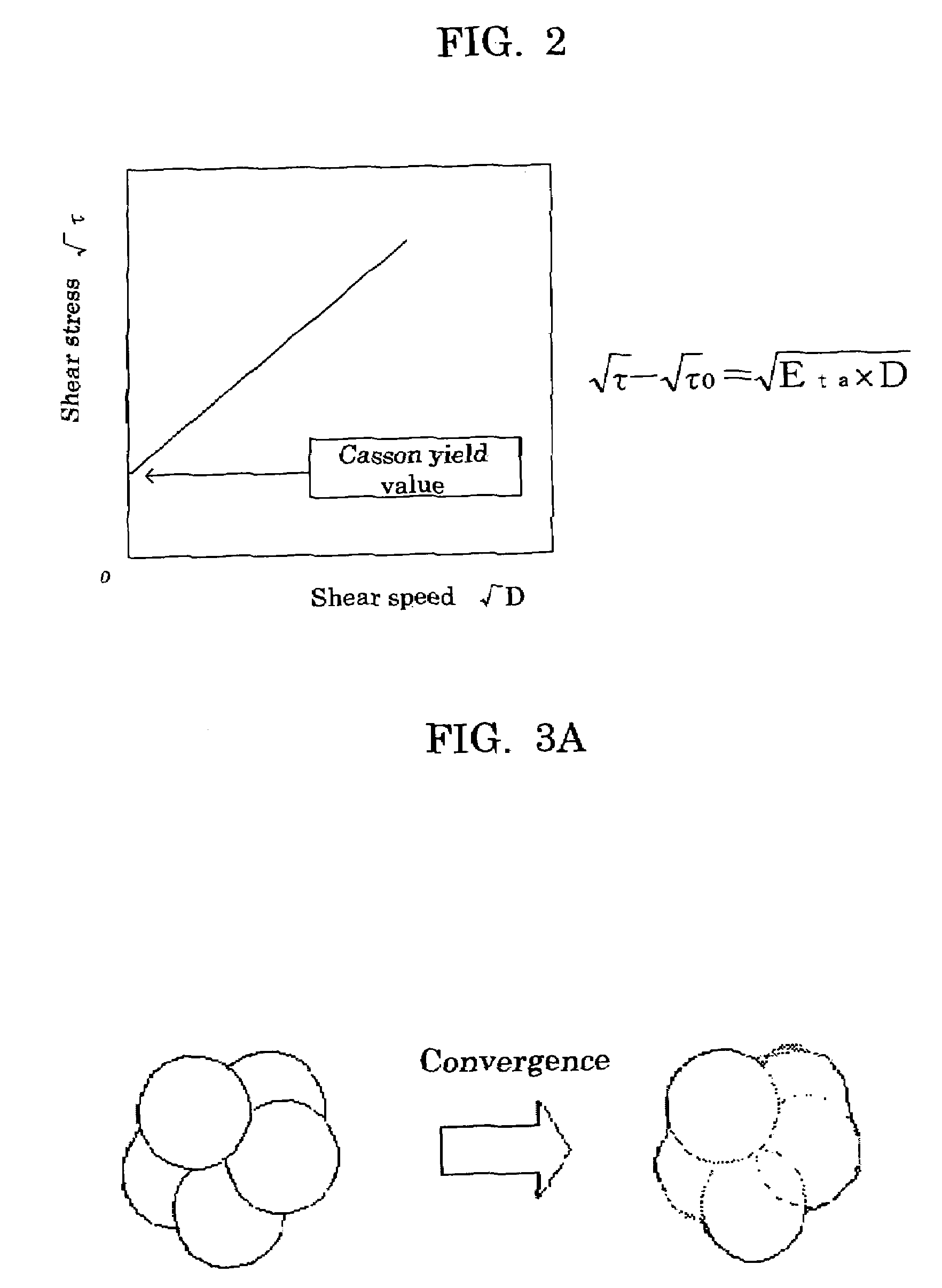Toner and developer, toner container, process cartridge, image-forming apparatus, and image-forming method using the same
a technology of toner and developer, which is applied in the direction of electrographic process, electrographic process using charge pattern, etc., can solve the problems of non-uniform frictional charge, difficulty in obtaining smaller toner particles having a volume average particle diameter of 2 m, and insatiable demand for high image quality, etc., to achieve high quality images, high density, and high quality images.
- Summary
- Abstract
- Description
- Claims
- Application Information
AI Technical Summary
Benefits of technology
Problems solved by technology
Method used
Image
Examples
production example 1
-Preparation of Oil Phase-
[0390]An oil phase of Production Example 1 was prepared as follows.
--Synthesis of Unmodified Polyester (Low-Molecular Mass Polyester)--
[0391]Into a reaction vessel equipped with a cooling duct, a stirrer, and a nitrogen inlet, 229 parts by mass of bisphenol A ethylene oxide dimolar adduct, 529 parts by mass of bisphenol A propion oxide trimolar adduct, 208 parts by mass of terephthalic acid, 46 parts by mass of adipic acid, and 2 parts by mass of dibutyltin oxide were introduced, and the reaction was performed under 230° C. for eight hours. Then, the reaction was further performed under reduced pressures of 10 mmHg to 15 mmHg for 5 hours, then 44 parts by mass of anhydrous trimellitic acid was added to the reaction vessel, and the reaction was performed at 180° C. under normal pressure for 2 hours to synthesize an unmodified polyester.
[0392]The obtained unmodified polyester had a number-average molecular mass (Mn) of 2,600, a mass-average molecular mass (Mw...
production examples 2 to 4
-Preparation of Oil Phase-
[0406]Oil phases of Production Examples 2 to 4 were prepared in the same manner as in Production Example 1 except that the carbon black and resin in the master batch were replaced with pigments and resins shown in Table 1 and the raw material solutions had solid content concentrations shown in Table 1. The Casson yield value and same manner as in Production Example 1. The results are shown in Table 1.
production example 5
-Preparation of Oil Phase-
[0407]An oil phase of Production Example 5 was prepared in the same manner as in Production Example 3 except that 2,500 parts by mass of the master batch was used and the raw material solution had a solid content concentration of 70% by mass. The Casson yield value and structural viscosity of the obtained oil phase were measured in the same manner as in Production Example 1. The results are shown in Table 1.
[0408]
TABLE 1ProductionProductionProductionProductionProductionOil phaseExample 1Example 2Example 3Example 4Example 5PigmentPB-k7PY155PR269PB15:3PY155ManufacturerDegussaClariantDainipponDainichiseikaClariantInk andColorChemicals,& ChemicalsInc.Mfg. Co., Ltd.ResinPolyesterPolyesterPolyesterPolyesterPolyesterSolid content50535540 75concentration(% by mass)Casson10.525.319.9 0.9240yield value(Pa)StructuralThixotropyThixotropyThixotropyThixotropyThixotropyviscosity
PUM
| Property | Measurement | Unit |
|---|---|---|
| number-average diameter | aaaaa | aaaaa |
| Tg | aaaaa | aaaaa |
| volume-average particle diameter | aaaaa | aaaaa |
Abstract
Description
Claims
Application Information
 Login to View More
Login to View More - R&D
- Intellectual Property
- Life Sciences
- Materials
- Tech Scout
- Unparalleled Data Quality
- Higher Quality Content
- 60% Fewer Hallucinations
Browse by: Latest US Patents, China's latest patents, Technical Efficacy Thesaurus, Application Domain, Technology Topic, Popular Technical Reports.
© 2025 PatSnap. All rights reserved.Legal|Privacy policy|Modern Slavery Act Transparency Statement|Sitemap|About US| Contact US: help@patsnap.com



